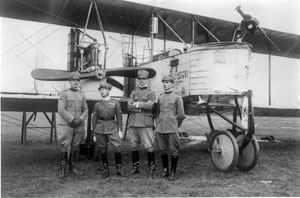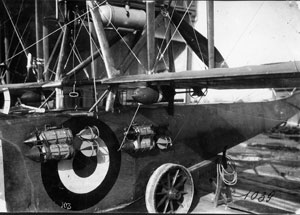
During WWI, the newly-established air component received a considerable boost by increasing the
number of airships (25), seaplanes (552) aircraft (86) operated by 791 Navy pilots and about 10,000 flight technicians, all headquartered in three seaplane stations. In 1916, important innovations were introduced in the Naval Aviation tasked to carry out a wide range of missions: reconnaissance, bombings and search. At the end of the war, 405 decorations were awarded for valor in recognition of the several acts of heroism performed by Airmen.
Interwar Years
The Navy was able to benefit from the great potentialities offered by aircraft carriers and, accordingly, in 1923 the Navy commissioned the first seaplanes carrier Giuseppe Miraglia, decommissioned in 1950. In 1923 the "Regia Aeronautica" became a separate military force and all the Italian Navy air assets were put under its control. The lack of an air doctrine in support of maritime operations and the reduction of effective airborne assets in naval warfare had a profound impact on the course of the Second World War.